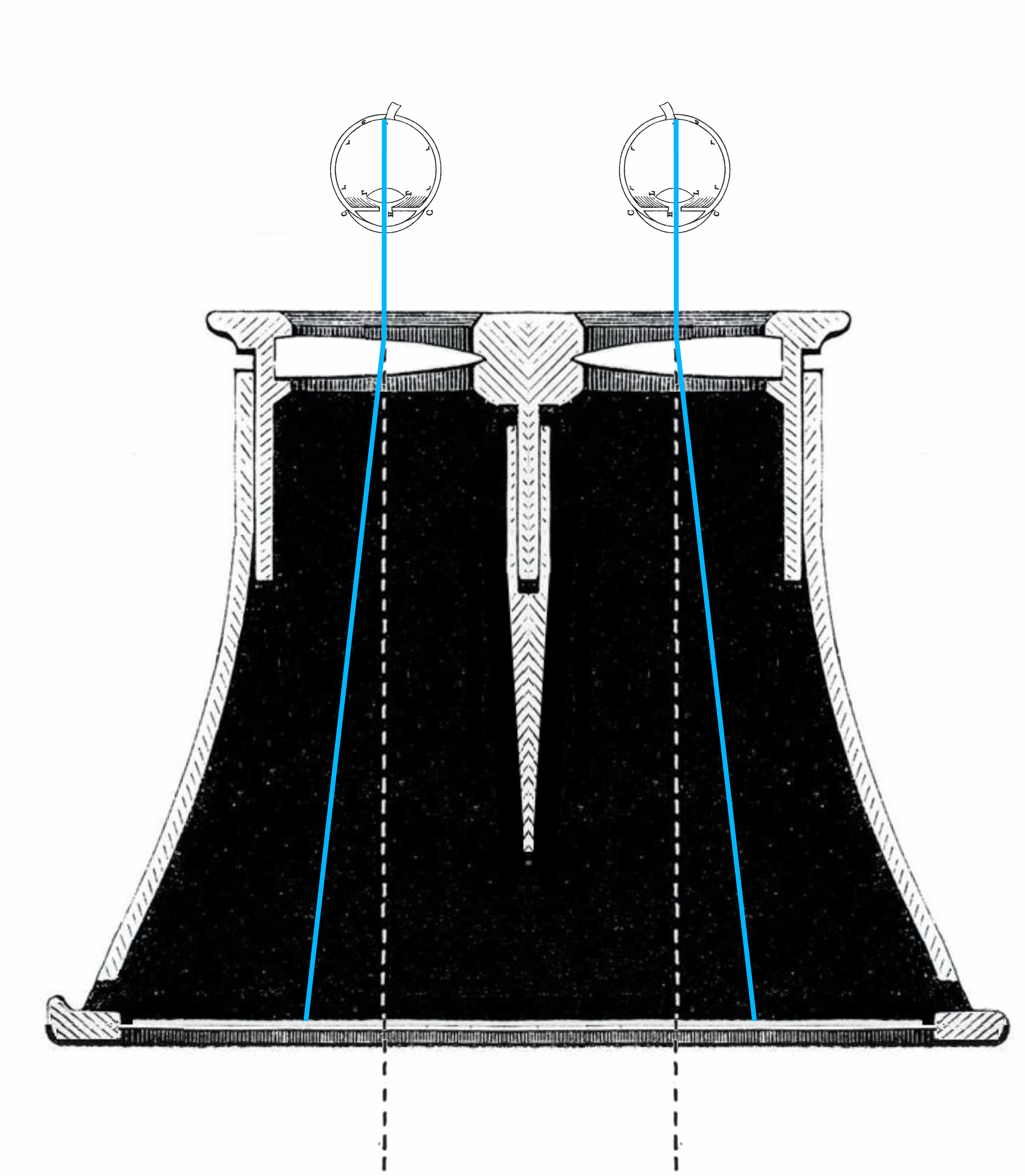
 |
Figure 1 – Brewster Stereoscope |
Here is an example of a 19th-century lenticular stereoscope (figure 1). This style is known as a Brewster stereoscope after the scientist and popularizer David Brewster.
 |
Figure 2 – Lenses Cross-section |
This design was standard in Europe for most of the 19th century. It has a mirrored flap that you can see in figure 1 and a ground glass back that, like the optical boxes on which it was modelled, allow for front and back illumination.
Back illumination brought daylight brilliancy to transparent glass stereo photographs. Varying front and back illumination brought to life the wonderful layered transparencies known as "tissue views."
The cross-section (figure 2) shows how the lenses divert the path of light (in blue) and direct each eye to its respective image. There is also an internal baffle to keep the images distinct.
 |
Figure 3 – Holmes Stereoscope |
Americans developed their own simpler design that was cheaper to build called a Holmes stereoscope (figure 3) after Oliver Wendell Holmes.
This particular one is an "eye-training" model by the Keystone View Co.. I like it because the hood is wide enough to accommodate a pair of glasses.